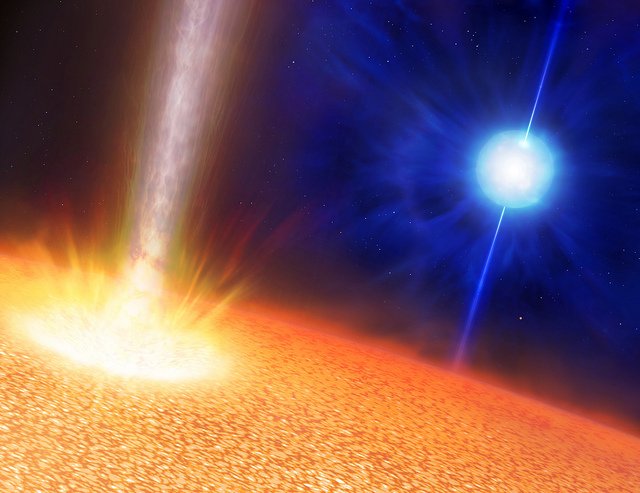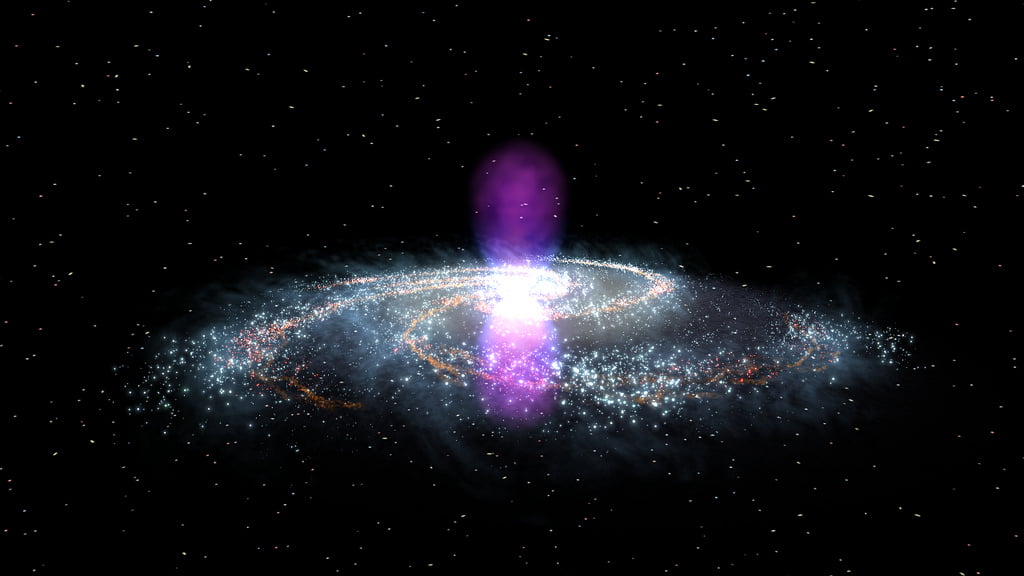According to the mediocrity principle, adapted by such notable scientists as Carl Sagan and Stephen Hawking, it is highly likely that intelligent life exists on other planets because the universe is just too huge. This is the accepted scientific theory that astrophysicists and scientists the world over have adopted as their modus operandi when observing the universe for signs of intelligent extraterrestrial life.
However much as we’d like to think that we are not the only intelligent species in the known universe, this may not be the case. As new research conducted by Hebrew University astrophysicist Prof. Tsvi Piran suggests, due to powerfully destructive gamma ray bursts in certain locations in our galaxy and others, the chances that complex intelligent life, similar or more advanced than our own, exists in the known universe are slim. To put this into perspective, of the estimated 100 billion galaxies in the known universe, only about one in ten may be able to support complex life comparable to that on Earth, much less than what was previously thought.
All others are likely too close to these destructive gamma rays, the research found.“The chances of aliens or other intelligent lifeforms is much smaller than we previously thought,” Prof. Tsvi Piran tells NoCamels.
Understanding the chances of gamma ray-induced extinction
Gamma ray bursts are known as the ‘brightest electromagnetic event to occur in the known universe,’ characterized by either small or large flashes of powerful gama ray energy in association with cataclysmic events in space. They were first discovered in the late 1960s in the United States, suspicious of potential attempts by the USSR to conduct secret nuclear tests in space, but have since been confirmed to be naturally-occurring phenomena. And there are two kinds: short gamma ray bursts occur when stars merge with blackholes, and longer, more powerful gamma ray bursts occur when stars burn out, collapse or explode, releasing 100 times the energy as short ones.
It is the effect of these longer, powerful gamma ray bursts on terrestrial events and extraterrestrial possibilities that Prof. Piran and his Spanish colleague Dr. Raul Jimenez sought to examine. Particularly, the researchers wanted to establish the likelihood that a long gamma ray burst could have caused the second-largest extinction event in the Earth’s history, the Ordovician extinction that wiped out about 80 percent of the plant’s species 450-440 million years ago.
SEE ALSO: Rosetta Mission Lands On Comet To Discover Possible Origins Of Life On Earth
Though gamma ray bursts occur thousands of light years away from the Earth’s surface, the researchers believe that they could still potentially damage our planet (and others), scourging the earth and causing a mass extinction event. “We found that within the last billion years, there is a 50 percent chance that there was an event strong enough to cause an extinction event,” Prof. Piran asserts, “This is the first step in proving that the statistical likelihood that this kind of event could cause a mass extinction.”
In short, we’re lucky to be from Earth
Piran and Jimenez also showed that the Earth’s location at the periphery of the galaxy has a lot to do with the sporadic effect of gamma ray bursts throughout its history. According to their research, planets closer to the center of the galaxy are 80-95 percent more likely to experience long gamma ray bursts and therefore extinction, which may explain why we have yet to discover intelligent life on other planets closer to the center of the Milky Way (our home galaxy).
“We tried to answer the question of what happens in other places in the Milky Way and we found that the chances of these kinds of gamma ray burst events are much higher in the center of a galaxy, due to the chemical composition of these planets and their environments. This may be a preliminary explanation for why we have yet to discover complex lifeforms on these planets, because they experience a greater concentration of gamma ray bursts.”
Sign up for our free weekly newsletter
SubscribeThe elemental conditions that foster more common gamma ray bursts are very different from those of Earth, so there’s no need to worry about imminent extinction. Scientists recently revealed data that suggests long gamma ray bursts occur in star-forming regions where there are low levels of ‘metallic’ elements like hydrogen and helium, and according to this data Piran and Jimenez estimated the likelihood of such bursts throughout our galaxy. This is what helped them draw the conclusion that the likelihood of complex, intelligent lifeforms on other planets in the galaxy diminishes in relation to the higher occurrence of gamma ray bursts.
SEE ALSO: SpaceIL’s Mission To The Moon Says Its Chances Of Winning The GoogleX Prize Are High
“We know today that there are conditions that suit the development of life on other planets in our galaxy, in an other galaxies, but have yet to discover decisive evidence of intelligent life. This research explains that lack of evidence.”
The bane of our existence?
After establishing that the chances for the development of intelligent life on other planets closer to the center of the Milky Way are low, what can be said of the other 99 billion galaxies in the known universe? Despite the fact that there is less data regarding their composition and structure, Piran’s research suggests that the chances of intelligent lifeforms developing there are low, though not completely impossible.
“We aren’t saying that there can’t be life on other planets. What we are saying is that the chances that there is life on other planets in other galaxies is smaller so long as those planets are closer to the center of the galaxy where they are more likely to be affected by gamma ray bursts. We are also saying that the chances that other complex lifeforms could have developed before our own lifecycle is small due to our understanding of the frequency of gamma ray bursts in the past.”
What Piran suggests here is that gamma ray bursts may have been more likely to affect Earth in the past due to different elemental conditions during the planet’s development than those that support life as we know it today. However, following development and due to our distance from the center of the galaxy, the likelihood of such an occurrence today is much lower than in the past, but not equally for all planets in the galaxy, let alone the universe.
Though mankind may like to think of itself as the center of the universe, Piran and Jimenez’s research suggests that it may be just our luck that Earth is located 27,000 light-years from the center of the Milky Way, otherwise an imminent gamma ray burst could be the bane of our existence.
Photos: NASA/ Luis Calcada/ Carl Wozniak/ Warwick University
Related posts

Resilient And Nutritious New Plant-Based Milk Aims To Make A Splash

Chocolate From Cultivated Cocoa Comes Without Environmental Toll

Plastic Fantastic: Startup Takes PVC Back To Its Crude Oil Roots







Facebook comments